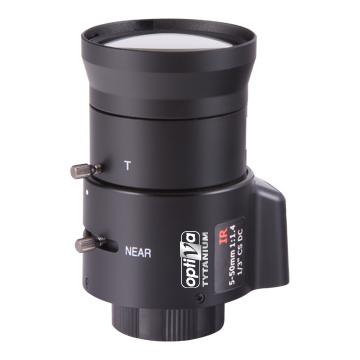-
CCTV
- Ready-made CCTV kits
- HD SDI
- IP Systems
- AHD CCTV
- TVI CCTV
- CVI CCTV
- Video surveillance for transport
- Storage devices
- Portable video cameras
- Thermal, Thermal imaging sights
- Enclosures for CCTV recorders
- Cameras
- Lenses
- Brackets and Housings
- Monitors
- Devices for video transsmision, CONVERTER
- Power supply, UPS
- Pan/Tilt Scanner
- IR+LED illuminators
- cables
- anti surge protection
- silicagel
- Microphones
- Connectors
- Архив
- Alarm systems
- Access control
- Intercom systems
- Fire safety systems
- Videodoorphones, doorphones and intercoms
- Electric gate automation systems and barriers
- Networking
- Sound systems
- Switching and Server Cabinets, accessories
- Tools and accessories
- Cables covers and accessories
- Power supply and accumulators
- HDMI
- Accessories for caravans and campers
- Wiring
- Solar energy
- Wind energy
- Contacts
CCTV lenses

CCTV lenses
Lens is basic element of each CCTV system. Its quality and proper selection effects quality and usefulness of whole surveillance system. To secure optimal work conditions of camera you have to take few parameters under consideration:
- CCD sensor size used in camera (1/3? or 1/4?)
- Focal size of lens (i.e.: f=4mm)
- Aperture (i.e.: F1.2)
- Type of used iris (fixed, manual, auto)
- Possibility of focal changing (manual zoom, motor zoom)
- Sharpness
When choosing the lens' CCD size one has to keep in mind that lens used in a given camera have to be designed for cameras with CCD sensor at least as large as in the device in which it is being installed. Angle of view will be changed (decreased by 30%). If lens designed for smaller CCD size (i.e. 1/4?) should be used with CCD sensor with bigger size (i.e. 1/3?) the vignetting effect will take place.
an extremely important part of adjusting lens in accordance with CCD sensors position is setting of back focus.
It is essential that this adjustment should take place with fully opened iris (smallest sharpness depth).
Lenses focal defines the angle of view. In case of lens dedicated for 1/3" CCD`s and focal of 4mm we obtain angle of view around 70 deg (horizontal). Similarly 2.8mm focal gives 90 deg and 8mm one gives 30 deg. Correct focal choosing can be done with help of simple formulas or easy in use calculators formed as circles with scale. Recommended solution is local vision which allows both for installer and future user to estimate visibility of observed zone.
Lenses aperture defines optical circuit efficiency. The more the value of F is closer to 1 the ?brighter? is lens, meaning it causes less loss in optical signal.
Iris type is linked with type and fickleness of lighting at observed zone. In case of outdoor sets where lighting changes drastically during the day (from full sun to night) lenses with auto iris are recommended.
Currently there are two formats of lens control ? DC type and VIDEO type. Thanks to those formats lens is able to adjust current size of iris accordingly to lighting conditions.
Focal changing is very important and handy element of modern lenses. In case of manual zoom we are able to set angle of view by changing focal manually (i.e. in range from 3mm to 8mm). Some lenses have more advanced options like motor zoom, where focal change is acquired by remote controlled internal mechanism.
Lenses with DAY/NIGHT optical circuit. Modern technology that keeps optimal work conditions regardless of light waves length. They are recommended for systems that use IR illuminators. Special lens construction and accurate layer selection secures same focus for visible light and for infrared (up to 940nm).
Last lens parameter, unfortunately often overlooked in producers catalogues is so called depth of sharpness. generally speaking, it is an ability of an optical system to render a precise, sharp image in a given distance range from the camera's spot. It is dependent on three parameters of lens:
